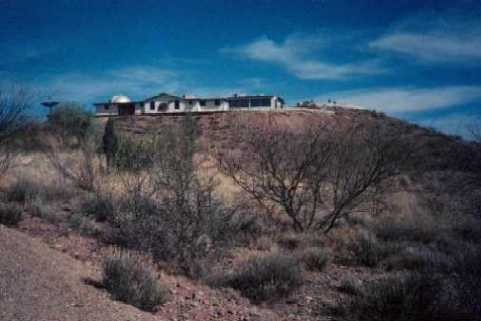
Note to readers: As of late 2010, the facility is now known as the San Pedro Valley Observatory. It is no longer a B&B, it is just an observatory. Sara Brown writes and says "the new owners are keeping with Dr. Vega's vision of specialty sessions but are also getting updated equipment and offering new classes in things such as CCD, etc."
I wish Sara and the new observatory the best of luck. The original article appears below, unaltered except for the contact information at the end. Thanks for reading, -Ed

Imagine, if you will, an astronomy bed and breakfast, under pristine dark skies, with an indoor/outdoor observatory stocked with equipment, friendly service, near-luxury accommodations, where you can observe all night to your heart's content, only to have a faithful servant close up while you stumble into bed a few doors away. You don't have to imagine because there's a place like that a short plane ride away. Sound like heaven on earth? Like many, I have looked at the ads for the Astronomer's Inn (and its New Mexico counterpart, the Star Hill Inn) for years, wondering what it would be like to spend a few uninterrupted days thinking about nothing but astronomy. In April 1999, I decided to find out for myself. Along with three other club members, I traveled out to the Arizona desert for a long weekend of observing and relaxing. I expected outstanding observing conditions and not much else. What I got was a pleasant surprise. Walking in the front door, I was confronted with a long, large building, extremely well-furnished (almost over-furnished) and well-equipped for astronomy. The complex is modestly sized but feels massive, due to its layout - every room seems to lead into every other room - and the variety its decor. In fact, one your first tasks upon arriving is to learn your way around the building. I expected a simple, rustic retreat. Boy, was I wrong! Within minutes, I found myself happily installed in the Egyptian Room, complete with marble jacuzzi, satellite TV, and a walk-in marble shower with solid brass fixtures and inlays on the floor. Other rooms include an Ivy-themed room, and a room with lots of Star Wars-like toys and a planetarium, complete with a dome in the ceiling. To put it mildly, I was impressed before I even got to the observatory.
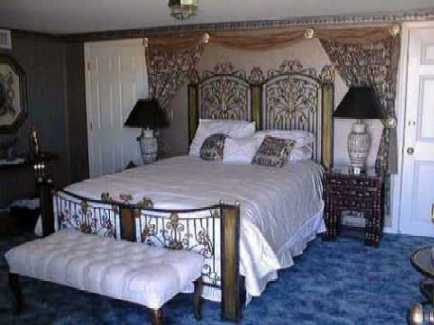
There are two places to go observing. You can use the scopes in the open-air observatory (many reflectors and refractors, and 2 12" LX200 SCTs) or you can purchase time on the 20" f/10 Maksutov in the dome. The latter is done through hired help (they don't want you messing around with the custom built Mak, and I understand why.) Also, if you bring your own equipment, you can set up on the patio outside. The relative humidity hovered around 9% when I was there, so dew isn't a factor. Finally, if it's cloudy out (not likely) there are mountains of astronomy- related books, videos, magazines, toys, and a large screen television to keep you busy.
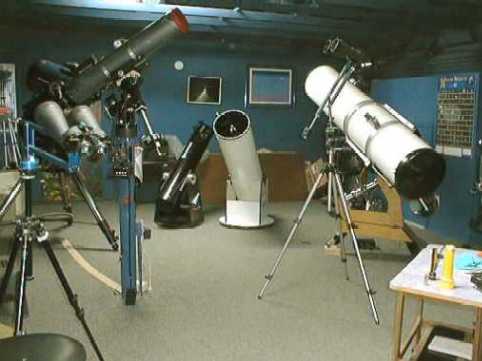
As the sun set the first evening, I knew I was in for something special. At sunset, there was no color at all on the horizon, something I almost never see from damp New Hampshire skies. Also, the darkness descends on you like a cool black blanket. On this first night, I had what may well be my most productive ob- serving session in my life. Working on my Herschel 400, I bagged 65 objects before midnight with the 12" Meade Starfinder Dob in the observatory. What's even more impressive is the type of objects I was observing. I cleaned up on ALL 50 Herschel objects -- 49 (mostly dim) galaxies and one globular -- in Virgo, in less than 3 hours. On the second day, I was given a tour of the mirror making facility at the University of Arizona (thanks to Howard for taking time out of his busy day!) We saw 6.5 meter and 8 meter mirrors, in various stages of completion. The second night, fellow club member Dave had purchased time on the Maksutov. Mars was nearing opposition, and he wanted to do some CCD work. However, the skies looked cloudy, so we called it off and set out for a leisurely dinner. As the sun set, I peeked out of the restaurant window, and noticed some clearing in the west. We jumped in the van and high-tailed it back to the observatory. The second night was even clearer than the first. I had not intended to do much "serious" work on my Herschel 400, but after a couple of hours talking and playing around with other people's scopes, the conditions were too good to pass up.
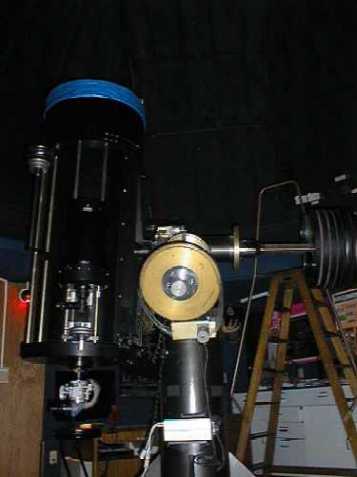
Of the 400 deep sky objects on the Herschel list, a disproportionally large number of them (158, or 39%) lie in the galaxy-rich spring sky around Virgo, Ursa Major, Canes Venatici, Leo, and Coma. This poses two difficulties for the observer. First, you have to locate the objects. Then, you have to identify them. This can be tough -- in some fields, there may be several galaxies crowding the FOV. Still, all 44 Ursa Major galaxies were logged in less than an hour, which is an amazing rate (at least for me.) I also "cleaned up" the areas in Canes Venatici and Leo Minor. Want to know how clear the conditions were? Halfway through the night, I laid some time aside to look for NGC 6118 in Serpens, which is roundly considered the most difficult Herschel object of them all. It's a relatively large galaxy with almost no surface brightness. Many experienced observers go their whole lives without seeing it. On this night, I found NGC 6118 in about thirty seconds. It looks a little bit like M33 does in my TeleVue Ranger under modest light pollution.
At the end of the second night, I logged 67 new Herschel objects, another new record for me. The third night was, incredibly, even clearer than the first two. Dave made another attempt to work with the Maksutov. I peeked in the dome to see how he was doing. I saw the CCD camera attached to the focuser and lots of computers and cables rigged to the scope, so I decided not to bother him. As it turned out, I never did get to look through that Maksutov. On the third night, I decided to slow down my hectic observing pace. There were a number of novices visiting the Inn (including a local reporter) and I spent some time showing them some of the brighter spring objects. Still, after they left, I wound up logging 42 Herschel objects. Early the next morning, watching the sun rise over the desert, I started recording my observations over the past three days. It had taken me nearly 6 months to log the first 157 objects on my Herschel survey. In the past three nights alone, I had logged another 174 more. Apparently, observing is a lot like buying a house -- the most important factors are location, location, and location.
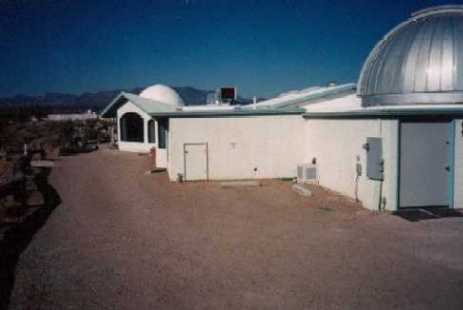
During my three days at the Inn, it began to dawn on me just how single-mindedly astronomy-oriented the place really is. Everywhere you turn, there is some piece of astronomy-related paraphernalia lying about. The bookshelves are stocked full of astronomy and space- related books. The magazine stands in the halls and the bathrooms are filled with old S&T and Astronomy back issues. Any guess as to what's in the video library? The whole experience rather smacks of overkill. However, I happen to LOVE overkill, and I couldn't have been happier. The Astronomer's Inn offers dynamite observing conditions, superb accommodations, friendly service (wait until you see what they do for breakfast around here) and is an excellent value. It's technically an "astronomy bed and breakfast," but to me, it feels more like a really nice house with a lot of telescopes in it. I will be back. In fact, we were already planning our next visit on the drive back to the airport. Highly recommended. Don't you have some vacation time coming?